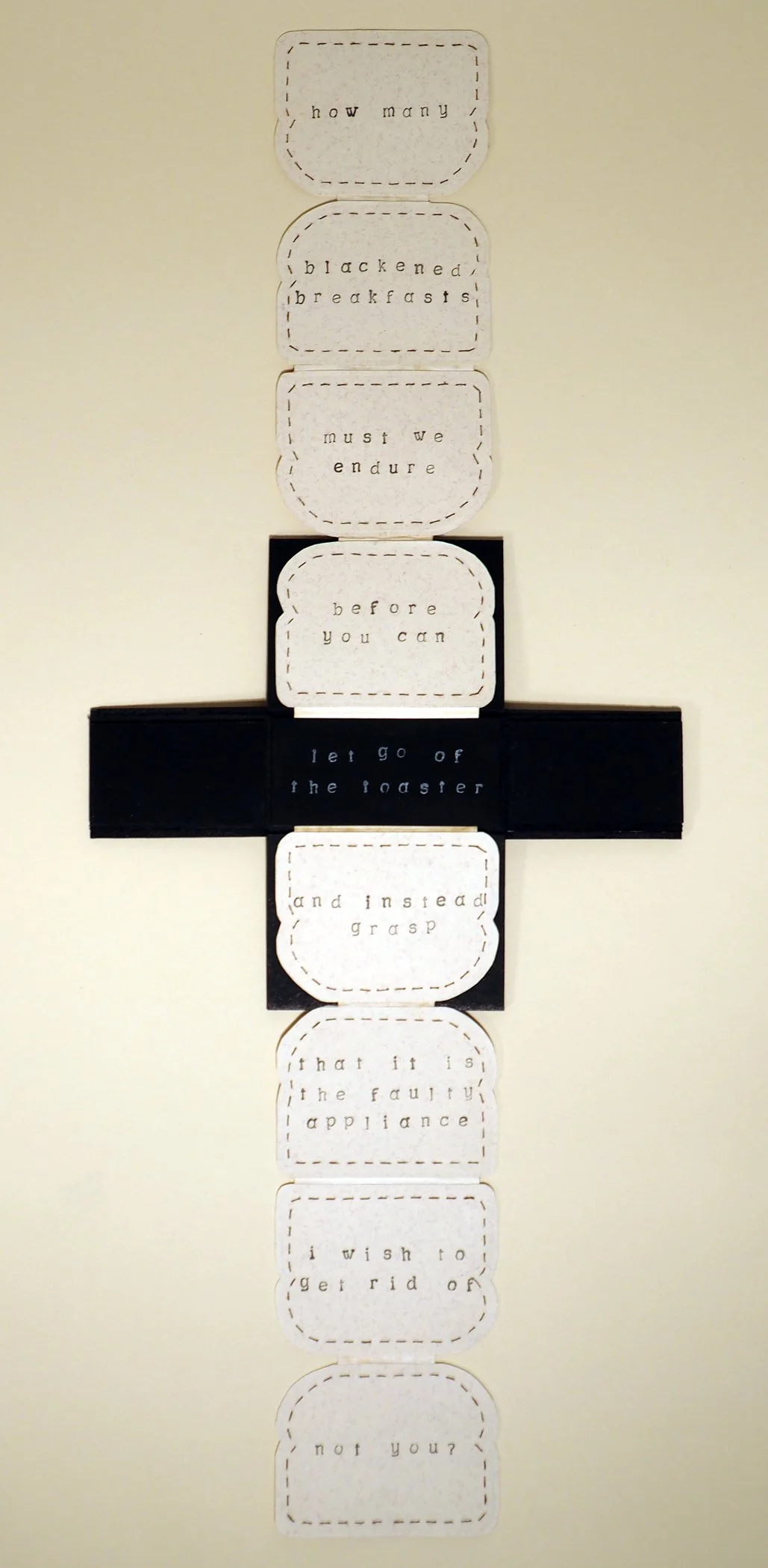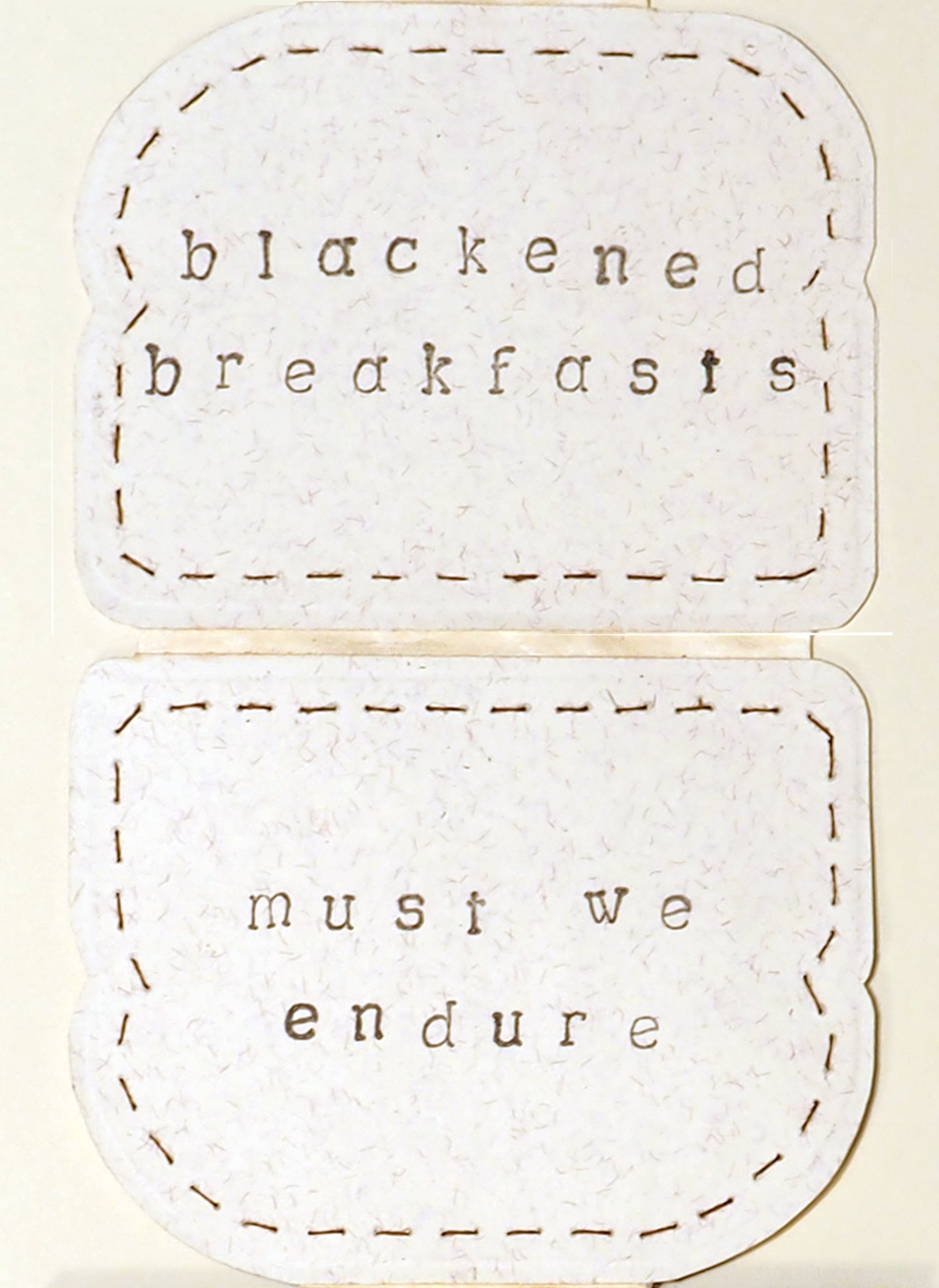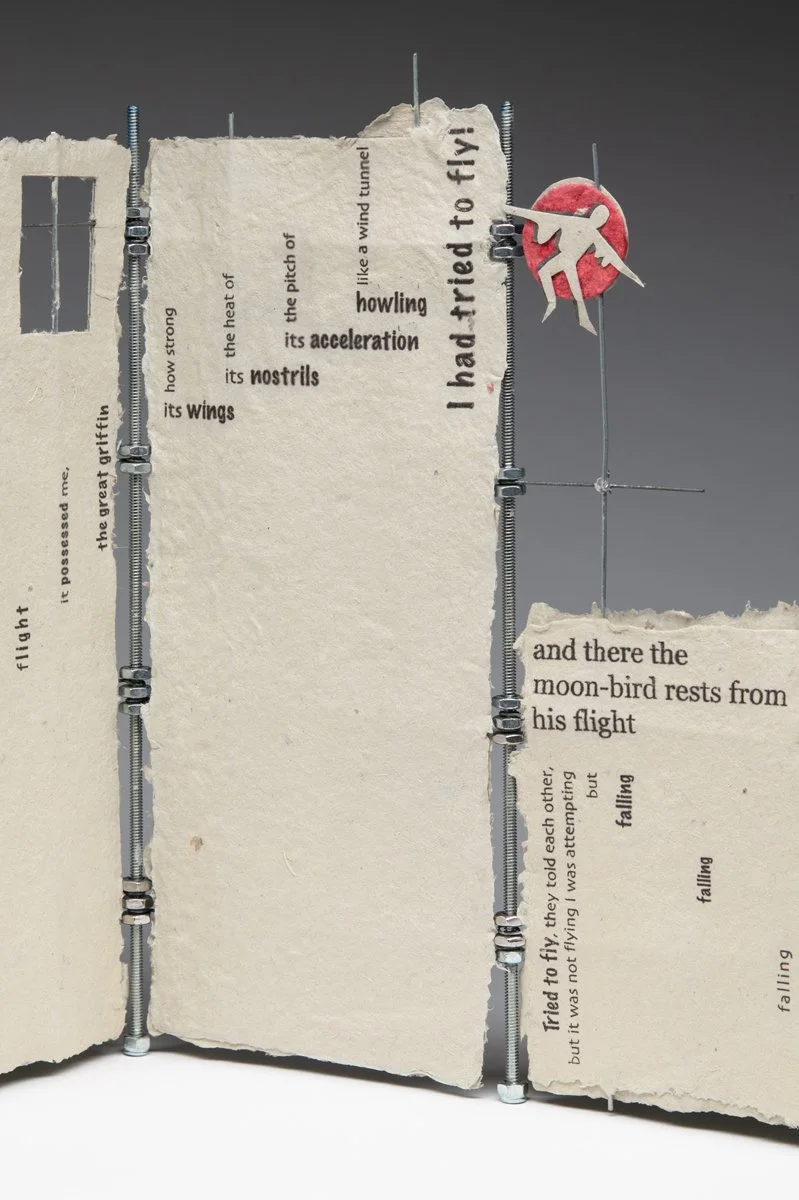
Photos by the artist.
Edition
open and variable
Measurements
4” x 4.75” x 2.75” closed; 25.75” x 10” fully opened
In The Collection Of
Special Collections, University of Denver Penrose Library
Special Collections Library, University of Texas San Antonio
About the Book:
Toaster was inspired by an aging appliance with an erratic tendency to scorch whatever food was popped into it and the subsequent discussions of fault that then ensued in our kitchen. With room for only a single phrase on each page (piece of bread), the pivotal moment can be slowed down and considered before action is taken or, hopefully, before further heated words are exchanged. This book is the first in my Domestic Discussions series, in which marital conversations intersect with household appliances.
Toaster is constructed as two accordion signatures within a case. When closed, the accordions mimic pieces of bread standing on their edges and can be seen through the slots in the top of the toaster lid. When the lid is removed, the sides of the case open and the accordions fold out, revealing the text. Each piece of bread is hand-sewn with brown embroidery thread (a ”crust”), and given the innate irregularity of printing with rubber stamps, some heavily-pressed letters look like they have been scorched on. Unexpected and delightful!
About the Text:
This text came to me almost complete within a few minutes of the burned-toast incident being described. It took a little longer to rework some of the words and phrasing and to get it to fit within the 10-character-per-line challenge I found I had set myself when I chose the rubber stamp typeface. It was like writing a terse poem, with no room for extraneous expressive thoughts; I liked how that paralleled the clipped speech of tense conversations.
In the first two copies of this edition, the center panel reads “let go of the toaster,” but in later copies, I added a word and it became the “damn toaster.”
About the Materials and Processes:
The pages of Toaster are made from bond paper and were hand-printed with rubber stamps. A Tyvek connective layer creates the accordion to which the front and back sides of the pages are sewn together with embroidery thread. The toaster shell is constructed from two layers of x-board with a connective layer of book cloth between. The lid is also constructed from x-board and covered with silver lokta paper. Vintage buttons (unique to each copy) are repurposed as the toaster controls; cable stoppers are utilized for the feet.








